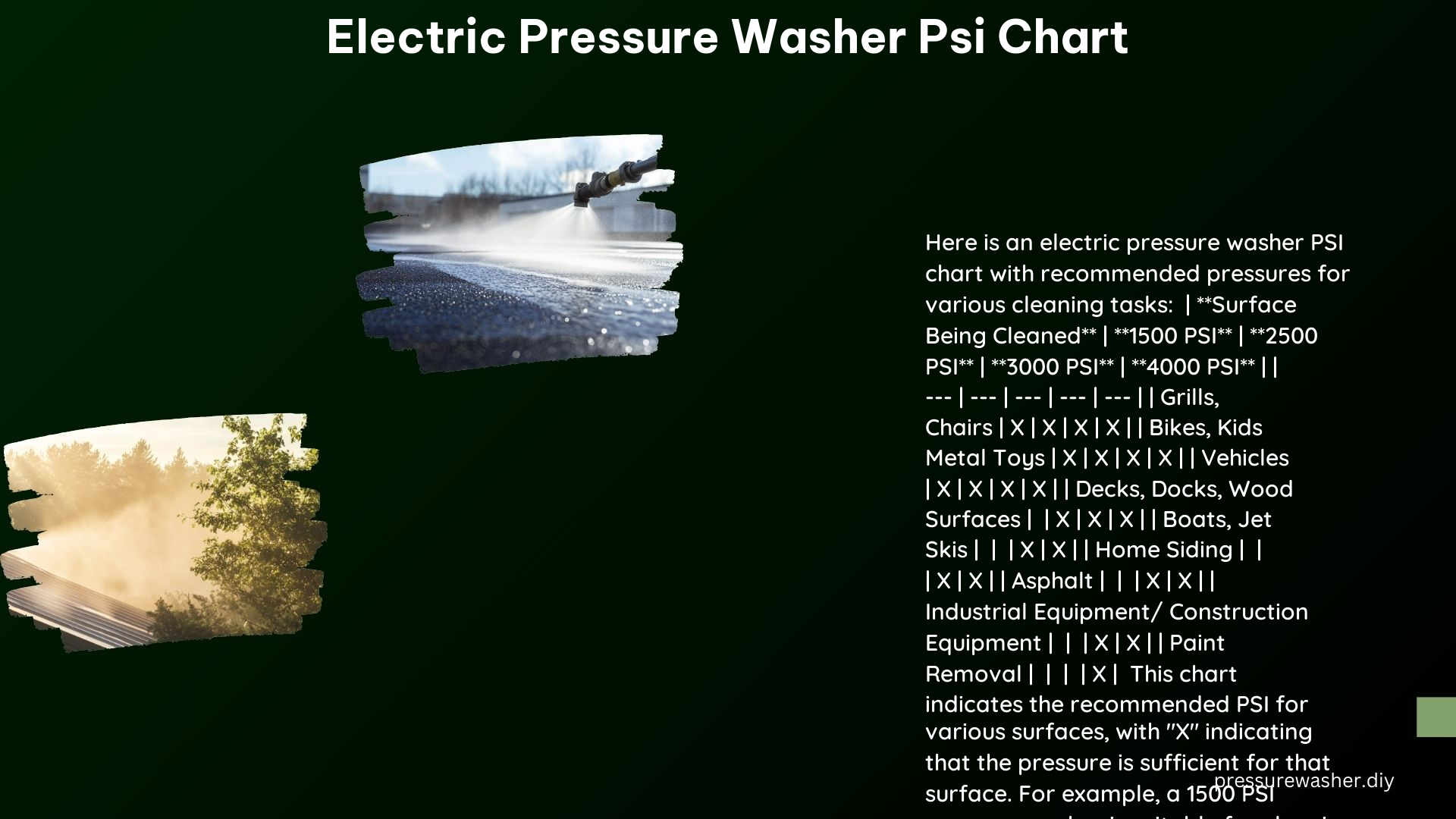When selecting an electric pressure washer, understanding the ideal PSI (Pounds per Square Inch) for various cleaning tasks is crucial. This comprehensive guide will help you choose the right PSI for your needs, ensuring efficient and effective cleaning results.
Ideal PSI for Common Cleaning Tasks
Light-duty Cleaning (1,000-1,500 PSI)
- Suitable for delicate surfaces like gutters, soffits, windows, and outdoor furniture
- Ideal for removing light dirt, dust, and grime without causing damage
- Recommended for cleaning vinyl siding, aluminum, and other sensitive materials
Medium-duty Cleaning (1,500-2,000 PSI)
- Ideal for most household surfaces, including concrete, brick, wood, patios, and fences
- Effective for removing moderate levels of dirt, mildew, and light stains
- Suitable for cleaning cars, RVs, and other vehicles without causing paint damage
Heavy-duty Cleaning (2,000-3,000 PSI)
- Recommended for boats, yachts, driveways, and heavily stained surfaces
- Effective for removing stubborn grime, grease, and built-up dirt
- Ideal for stripping paint, removing rust, and cleaning heavily soiled areas
Extra Heavy-duty Cleaning (Over 3,000 PSI)
- Necessary for removing graffiti, paint, and caked-on dirt
- Suitable for industrial and commercial cleaning applications
- Requires caution and proper safety equipment to avoid damage to surfaces
Factors Affecting PSI and Flow Rate

Flow Rate (GPM)
- Measures the volume of water delivered through the pressure washer
- A higher flow rate can help clean larger areas faster
- Flow rate is typically between 1.2 to 2.5 GPM for most electric pressure washers
Duty Cycle
- The flow rate affects the duty cycle, as a higher flow rate can reduce the duty cycle
- Duty cycle refers to the amount of time the pressure washer can operate continuously
- Electric pressure washers typically have a duty cycle of 30 to 60 minutes, depending on the model and flow rate
Combining Multiple Electric Pressure Washers
Combining multiple electric pressure washers in parallel can increase the overall PSI and GPM. However, this setup may not be practical or cost-effective for most users, as it requires additional equipment, plumbing, and power sources.
Technical Specifications
PSI (Pounds per Square Inch)
- Measures the force of the water stream
- Higher PSI indicates a more powerful and forceful water stream
GPM (Gallons per Minute)
- Measures the volume of water delivered
- Higher GPM can help clean larger areas more efficiently
Duty Cycle
- The amount of time the pressure washer can operate continuously
- Longer duty cycles allow for more extended cleaning sessions
References
- Pressure Washer PSI Chart by Pressure Washers Direct: Link
- Pressure Washer Buying Guide by The Home Depot: Link
- What is a Good PSI for a Pressure Washer? by Pittsburgh Spray Equipment Company: Link
- Choosing the Right Pressure Washer PSI for Industrial Cleaning by Hotsy Water Blast: Link
- Pressure Washer Specs are Mostly Lies or Misunderstanding by Reddit: Link
